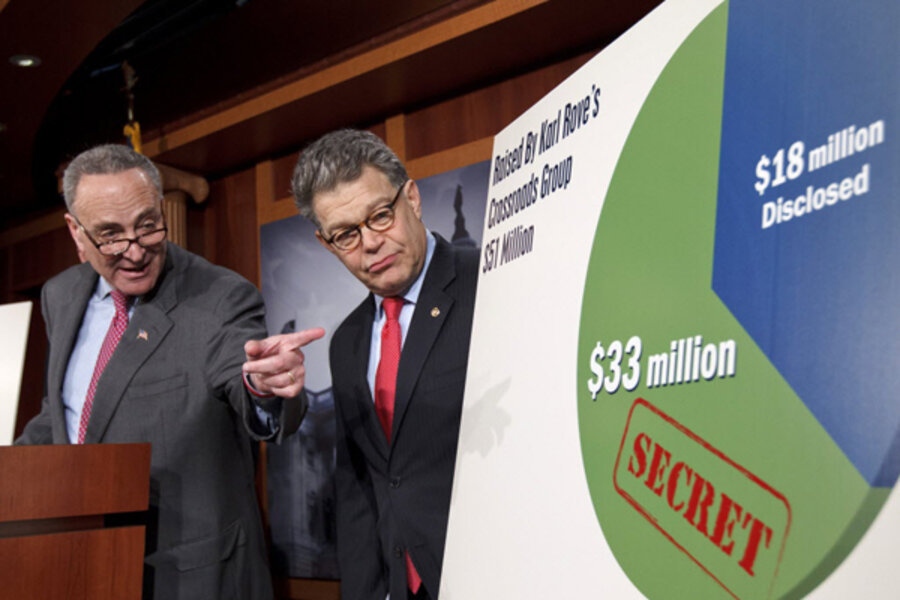Restore our Future, which supports Republican presidential nominee Mitt Romney, is the largest, most well-funded super PAC of the 2012 election cycle. It has spent spent $86.6 million and raised $96.7 million, according to Federal Election Commission filings as of Oct. 4, leaving it with at least $10 million available for the last weeks of the campaign.
The Center for Public Integrity reports that the PAC was founded by Carl Forti, the political director for Mr. Romney’s 2008 presidential campaign, and Charles Spies, Romney’s chief financial officer and counsel in 2008.
Restore our Future has spent $14,015,165 in support of Romney so far. The organization has spent $28,484,247 against President Obama, and a combined $39,991,995 against Newt Gingrich and Rick Santorum in the GOP primaries.
The vast majority of contributions to Restore our Future come from the financial, insurance, and real estate sectors. But the biggest individual donors are casino billionaire Sheldon Adelson, Texas homebuilder Bob Perry, Bain Capital, and energy billionaire William Koch. Mr. Adelson, who ranks No. 12 on the Forbes 400 list of the richest people in America, has donated $10 million to Restore our Future through two of his companies, the Adelson Drug Clinic and the Las Vegas Sands. He has donated at least $41.2 million to pro-Republican super PACs in the 2012 campaign cycle.









